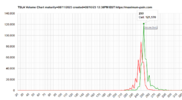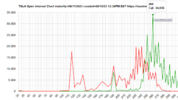Artful Dodger
"Neko no me"
U.S. core CPI posts smallest back-to-back increases in two years | BNN Bloomberg

 www.bnnbloomberg.ca
www.bnnbloomberg.ca

Cheers to the Inflatons!

U.S. core CPI posts smallest back-to-back increases in two years - BNN Bloomberg
A key measure of U.S. consumer prices rose only modestly for a second month, bolstering hopes that the Federal Reserve can tame inflation without sparking a recession.
Cheers to the Inflatons!




